In November 2013 owners of of 50 selected sites across Los Angeles county were prescribed one of four custom wildflower seed mixes based on their location. Participants were responsible for sowing, watering, weeding, and occasionally hunting gophers. Over the past few weeks we have been receiving reports from these Wildflowering L.A. sites. The first accounts of flowers came in early February, but with our early spring Southern California heat and sun kicking in, we have many sites experiencing their first waves of dramatic blooms. This will continue in secessional waves through June with various species coming up, flowering, and then receding as others take the stage.
On January 17th, 2014, our governor Jerry Brown declared a “drought state of emergency” in California. And while the orchards and fields that feed us are drying up in the Central Valley, our green lawns and flowing fountains down here in Los Angeles make it seem like everything is just fine. Perhaps the Wildflowering L.A. project might have been easier during a rainy El Niño year when our wildflowers really pop and Angelenos make the pilgrimage out to the flowing poppy fields of the Antelope Valley. Though it’s been a challenge, this drought period seems like the most appropriate and provocative time for us to really pay attention to the land we live on, to what really grows here, along with the whys, whens, and hows.
Participants have been sending their ‘bloom ratings,’ estimates of when their wildflower site might peak, some current snapshots, and general anecdotes about their experiences with the project. I have been compiling this information and adding it to our ‘map’ page, which will continue to be updated through June. Around that time the plants will start to dry up and set seed. Participants will be encouraged to let this cycle play out, allowing the meadows to gradually turn golden brown and broadcast seed for the next season.
From March to June 2014 you can take a tour to view the sites with the best displays which include homes, churches, schools, botanic gardens, public parks, vacant lots, and even a U.S. post office. All of the sites are visible from streets and public paths (but should not be entered). A prominent carved wood sign, inspired by state and federal park signage, identifies each site which range in size from 500 to 2000 square feet.
To help plan your tour, start on our interactive map page, and then download this PDF list of the most active sites organized by geographic region. And for the energetic cyclist crowd in North East L.A. – where there is an especially heavy concentration of sites – a special map for touring on two wheels has been created. Share your text and photo blooming updates with the Twitter and Instagram hashtag #wildfloweringLA, which will post directly to this webpage, where you can also see what people are finding at other sites across town.
Future Wildflowering L.A. programs include an installation/exhibition about the project presented April 26-27, 2014 at The Shed (1355 Lincoln Avenue, Pasadena 91103) hosted by La Loma Development; a late-June seed-sharing event; and a fall release event for a booklet telling the story of selected participating sites with before and after photos.
Wildflowering L.A. sites were selected from an open call based on public visibility and distribution across the County. Owners of selected sites are given free native wildflower seed mixes at workshops in partnership with the Theodore Payne Foundation. Soil preparation, seeding, and wildflower tending were demonstrated, and one of four custom wildflower seed mixes was prescribed – Coastal, Flatlands, Hillside, and Roadside – inspired by Reyner Banham’s 1971 book, Los Angeles: The Architecture of Four Ecologies.
For more information visit the ‘about’ and ‘resources’ pages of the website. And posted yesterday at The Horticult is a great tour of various project sites by Chantal Aida Gordon, Field of Dreams: ‘Wildflowering L.A.’ Turns Urban Sprawl Into Native, Magical Meadows.
Special shout-outs to Roman Jaster for the graphic design and website; the boys at the Knowhow Shop for the sign fabrication (and super idea of burning them, instead of staining them black); Isabel Avila for the official before and after photos; Lili Singer and Genny Arnold at the Theodore Payne Foundation for their support/expertise/enthusiasm; the ladies at LAND (Los Angeles Nomadic Division), Samantha Frank, Laura Hyatt, Maryam Hosseinzadeh, and especially Shamim Momin.
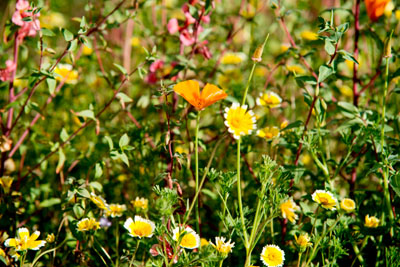
#40 – Carthay Center Elementary School, 6351 W. Olympic Boulevard (photo: Ryan Benoit, The Horticult)
Wildflowering L.A. is a native wildflower seed sowing initiative throughout Los Angeles County by artist Fritz Haeg. It is presented by LAND (Los Angeles Nomadic Division) in partnership with the Theodore Payne Foundation and supported by a grant from the James Irvine Foundation.
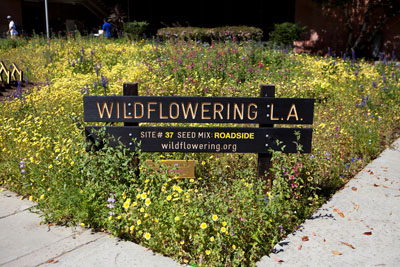
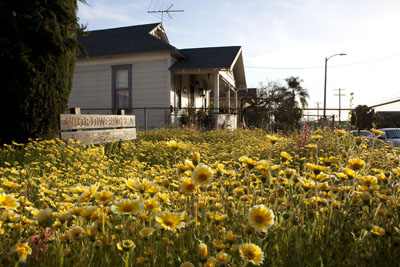
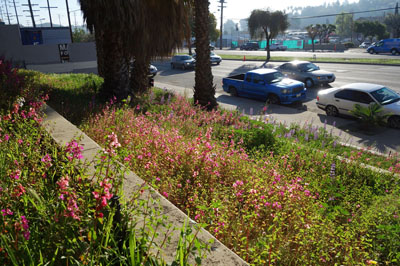
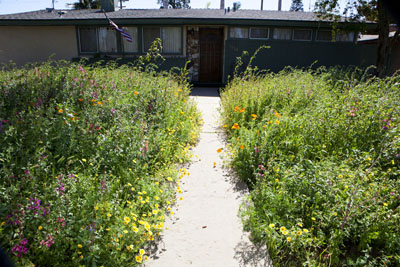
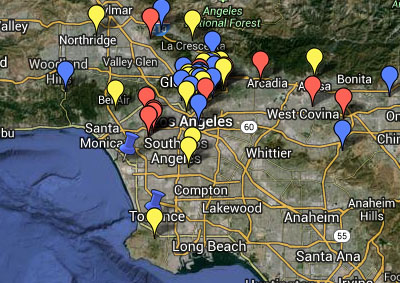
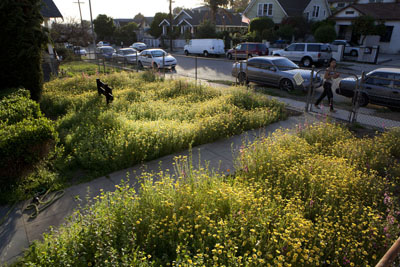
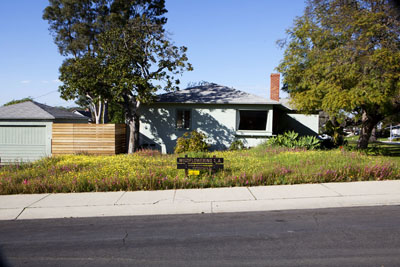
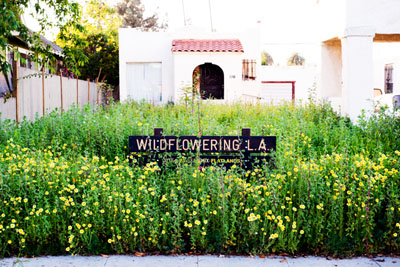
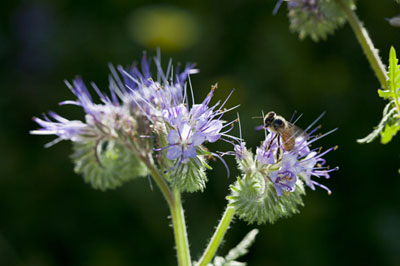
Recent Comments